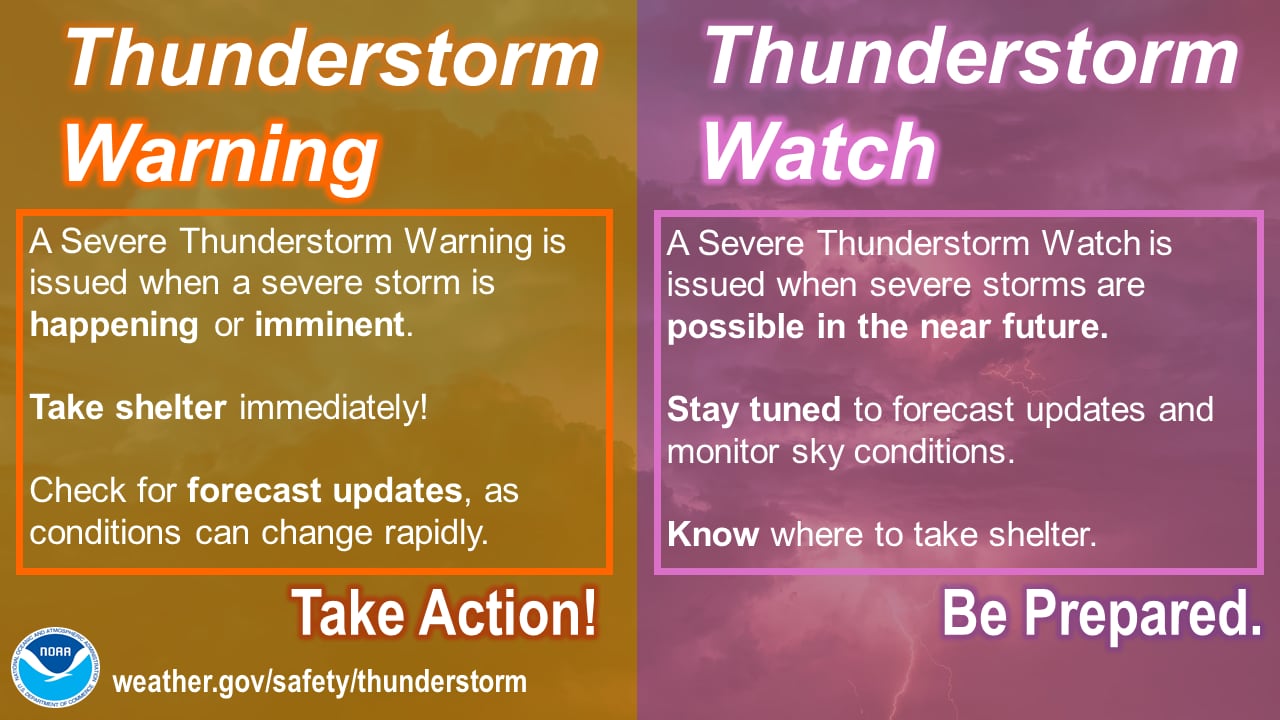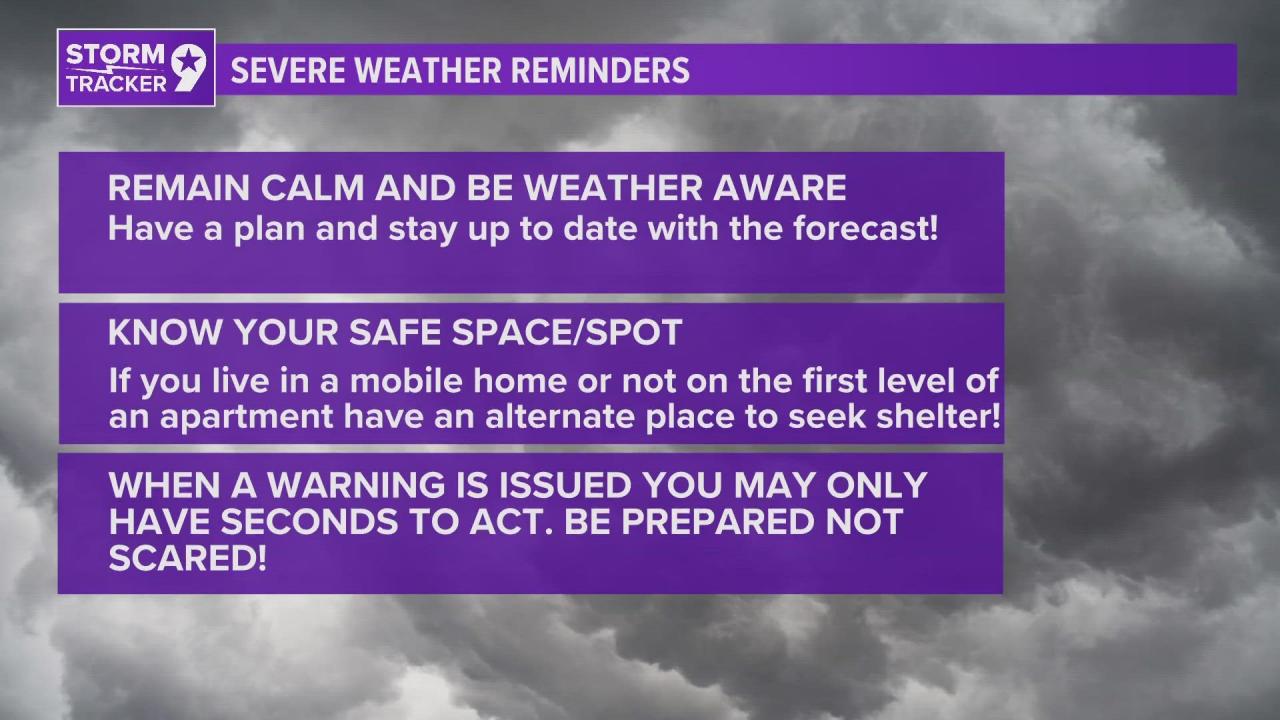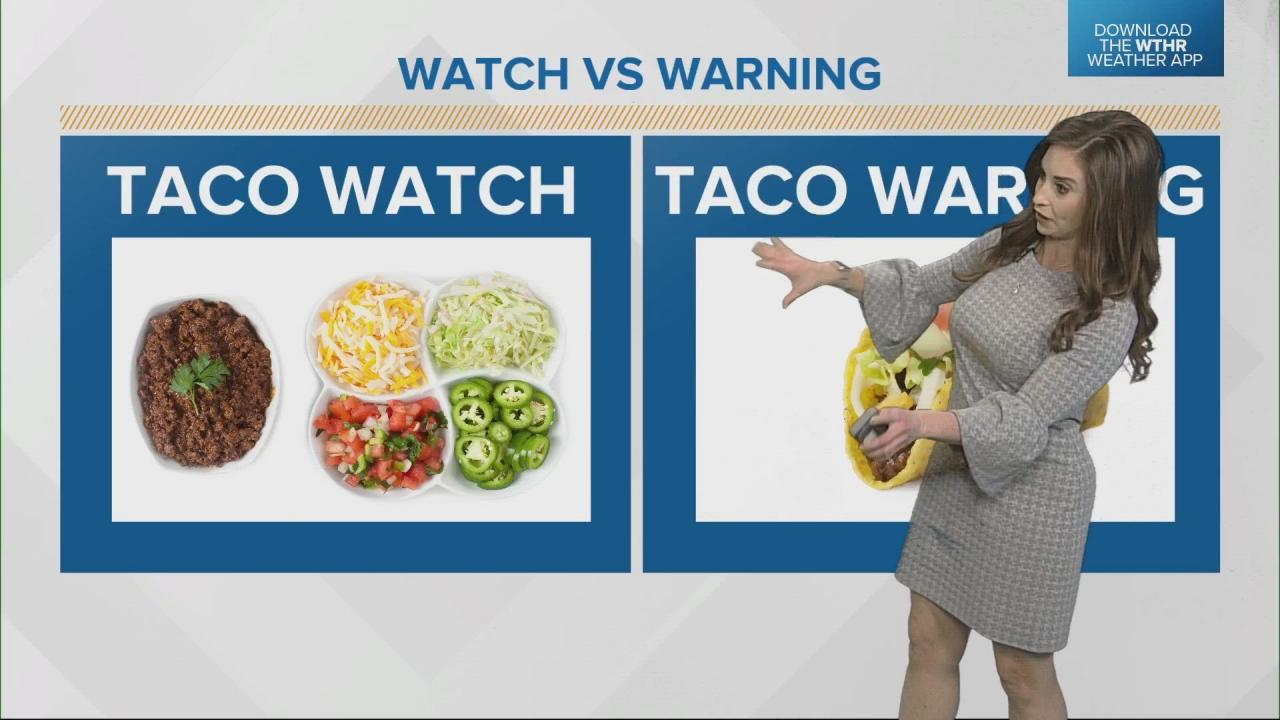
Difference between watch and warning – Navigating the world of weather alerts can be daunting, but understanding the difference between a watch and a warning is crucial for staying safe. Watches and warnings are distinct types of alerts issued by weather authorities to inform the public about potential or imminent hazardous weather conditions.
Whether it’s a thunderstorm, hurricane, or blizzard, knowing the difference between these alerts can help you make informed decisions and take appropriate actions to protect yourself and your loved ones.
Differences between Watch and Warning

Watches and warnings are two types of weather alerts issued by meteorological organizations to inform the public about potential or imminent hazardous weather conditions. While both watches and warnings indicate the possibility of severe weather, they differ in terms of severity, issuing authority, purpose, content, and response actions.
Differences in Severity, Difference between watch and warning
A watch is issued when conditions are favorable for the development of severe weather, but the timing and location of the event are uncertain. It serves as an early notice to the public to be aware of the potential for severe weather and to monitor weather forecasts closely.
A warning, on the other hand, is issued when severe weather is imminent or already occurring. It indicates that hazardous weather is expected to affect a specific area within the next few hours or minutes. Warnings are more urgent than watches and require immediate action to protect life and property.
Issuing Authority
Watches and warnings are issued by authorized meteorological organizations. In the United States, the National Weather Service (NWS) is responsible for issuing both watches and warnings. Other countries may have their own designated meteorological agencies that issue weather alerts.
For the ultimate Lakers experience, check out the lakers watch page, where you can find live game streams, highlights, and exclusive content. Whether you’re a die-hard fan or just curious about the team, there’s something for everyone on the oge system watch page.
The NWS issues watches and warnings based on criteria established by the World Meteorological Organization (WMO). These criteria include specific thresholds for wind speed, hail size, tornado potential, and other hazardous weather conditions.
Are you looking for a fun and interactive way to connect with friends and family? Watch together allows you to stream movies, TV shows, and videos in real-time with others, no matter where they are. Whether you’re a fan of the Lakers, want to keep up with the latest OGE system updates, or simply want to catch the latest game between the Lakers and Nuggets, there’s a lakers watch or watch lakers vs nuggets stream available for you.
Purpose and Content
The purpose of a watch is to provide early notice of the potential for severe weather and to encourage the public to monitor weather forecasts and be prepared to take action if necessary. Watches typically include information about the type of severe weather that is possible, the geographic area that may be affected, and the time frame during which the severe weather is expected to occur.
The purpose of a warning is to provide immediate notification of imminent or ongoing severe weather. Warnings typically include information about the type of severe weather that is occurring, the specific geographic area that is being affected, and the actions that people should take to protect themselves and their property.
Response Actions
When a watch is issued, the public should monitor weather forecasts closely and be prepared to take action if necessary. This may include securing loose outdoor objects, having an emergency plan in place, and staying informed about the latest weather updates.
When a warning is issued, the public should take immediate action to protect themselves and their property. This may include seeking shelter in a sturdy building, avoiding outdoor activities, and following the instructions of local authorities.
Dissemination Methods
Watches and warnings are disseminated through a variety of methods, including television, radio, internet, social media, and mobile phone alerts. The NWS uses a system called the Emergency Alert System (EAS) to broadcast warnings to the public through television and radio stations.
The EAS is also used to send warnings to mobile phones through text messages and wireless emergency alerts.
The effectiveness of a watch or warning depends on how quickly and effectively it is disseminated to the public. Timely and accurate warnings can help save lives and property by giving people the time to take appropriate action.
Ultimate Conclusion: Difference Between Watch And Warning

Comprehending the distinction between a watch and a warning empowers you to respond effectively to weather hazards. By staying informed and adhering to the recommended actions, you can minimize risks and ensure your safety during severe weather events.
Clarifying Questions
What is the key difference between a watch and a warning?
A watch indicates the possibility of hazardous weather conditions developing within the next 12 to 48 hours, while a warning signifies that hazardous weather is imminent or already occurring.
Who issues watches and warnings?
Watches and warnings are typically issued by national weather services or meteorological agencies, such as the National Weather Service in the United States.
What actions should I take when a watch is issued?
When a watch is issued, monitor weather updates closely and be prepared to take action if conditions worsen. Gather necessary supplies and have an evacuation plan in place.
What actions should I take when a warning is issued?
When a warning is issued, take immediate action to protect yourself. Seek shelter indoors,远离 windows, and follow the instructions provided by local authorities.






